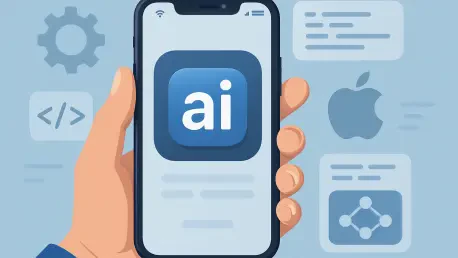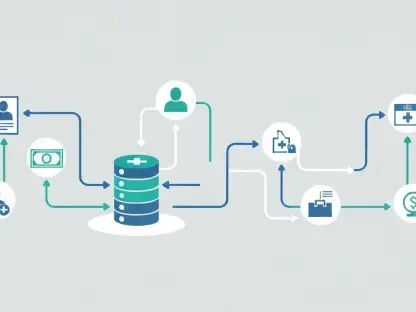Imagine a world where crafting a mobile application is as simple as chatting with a friend over coffee, where the complexities of coding are stripped away, leaving only the power of an idea and a smartphone in hand. This isn’t a distant dream but a reality unfolding through innovative conversational tools that are reshaping the landscape of iOS app development. Platforms leveraging artificial intelligence are now enabling everyday users—those without a shred of programming knowledge—to build functional apps directly from their devices. This shift is not just a technological advancement but a cultural one, breaking down barriers that have long kept app creation in the hands of a skilled few. The focus here is on how these tools, particularly one standout platform, are democratizing the process, making it accessible to anyone with a creative spark. This exploration will delve into the mechanics, benefits, and challenges of such tools, shedding light on whether they truly empower the masses to step into the realm of digital innovation without traditional hurdles.
The Rise of AI-Driven App Creation
The emergence of AI-driven platforms marks a pivotal moment in mobile app development, particularly for iOS users who have historically faced steep learning curves with tools like Xcode. A prime example is Bitrig, a groundbreaking app crafted by former Apple engineers, designed to let users build applications through natural language conversations with an AI chatbot. This approach, often dubbed “vibe coding,” sidesteps the need for syntax mastery or external development environments, as everything happens on the device itself. Users can articulate their app ideas in plain English, watch the AI generate code in real time, and tweak features during the dialogue. This self-contained system not only saves and manages apps locally but also offers instant feedback, making the process feel intuitive even for complete novices. The significance lies in how such platforms lower the entry barrier, allowing anyone—from hobbyists to small business owners—to create custom solutions without investing years in learning to code or hiring expensive developers.
Beyond the technical ease, the real allure of conversational tools like Bitrig is their ability to cater to niche, personalized needs with remarkable speed. Consider the potential for an event planner to whip up a tailored scheduling app or a home cook to design a unique recipe tracker—all within minutes of conceptualizing the idea. Demonstrations by industry insiders have shown how quickly prototypes can come to life; for instance, a sunscreen tracking app with UV-based reminders was built in mere moments through casual chat prompts. This immediacy transforms app development from a daunting, resource-heavy task into a spontaneous act of creativity. Pre-built templates, such as tip calculators or metronomes, further ease the learning curve by providing starting points for users to experiment with and customize. The broader implication is a tech landscape where innovation isn’t limited to Silicon Valley coders but extends to everyday individuals who can now solve real-world problems with tools that speak their language.
Challenges and Limitations of Conversational Tools
While the promise of conversational app development is enticing, it’s not without its hurdles, as even the most user-friendly platforms come with constraints that temper their accessibility. Take Bitrig’s free version, which limits users to just 30 messages per month, with a daily cap of five—a restriction that can quickly stifle experimentation since each edit or request consumes a message. This forces users to be exceptionally concise, which may frustrate those unfamiliar with articulating technical needs efficiently. A subscription plan at $19.99 monthly boosts the quota to an additional 100 messages, offering more breathing room for complex projects, but the cap still looms as a barrier for prolific creators. Compared to other AI tools like Claude, which often require integration with external platforms, Bitrig’s on-device simplicity is a strength, yet its usage limits highlight a trade-off between ease and flexibility that potential users must weigh before diving in.
Another layer of challenge lies in the learning curve that persists despite the conversational interface, as well as the scope of what these tools can achieve. While the AI can handle straightforward apps with basic functionalities, more intricate projects requiring advanced integrations or custom backend systems may still demand traditional coding expertise or supplementary tools. Users might find themselves hitting a ceiling when their app ideas outgrow the platform’s capabilities, leading to a potential disconnect between ambition and execution. Additionally, the reliance on AI interpretation means that vague or poorly phrased instructions can result in unexpected outputs, requiring multiple iterations—and thus more messages—to refine the app. This underscores a critical point: while conversational tools democratize access, they don’t entirely eliminate the need for clarity of thought or an understanding of app design principles. Aspiring developers must still bring patience and precision to the table to navigate these innovative yet imperfect systems effectively.
Looking Ahead at Inclusive Innovation
Reflecting on the journey of conversational tools in iOS app development, it’s evident that platforms like Bitrig have carved a significant path toward inclusivity by simplifying a once-exclusive craft. Their ability to transform casual dialogue into functional apps marks a turning point, empowering countless individuals to bring personal and professional ideas to digital life without grappling with code. The intuitive design and real-time feedback mechanisms set a precedent for how technology can bridge gaps between experts and amateurs, fostering a wave of creativity that was previously unimaginable for many. Even with constraints like message quotas, the foundation they have laid reshapes perceptions of who can be a developer, proving that innovation can indeed stem from anyone with a vision.
Moving forward, the focus should shift to refining these tools to address existing limitations while expanding their reach to even broader audiences. Developers of such platforms might consider flexible pricing models or tiered features to accommodate varying user needs, ensuring that quotas don’t hinder exploration. Additionally, integrating educational resources within the app could help users better articulate their ideas, minimizing miscommunication with the AI. The tech community could also benefit from collaborative forums where users share templates and solutions, further lowering the entry barrier. As these conversational tools evolve, the potential to revolutionize app creation lies in balancing simplicity with scalability, ensuring that the next generation of innovators—regardless of technical background—can turn fleeting thoughts into impactful digital realities with ease.









